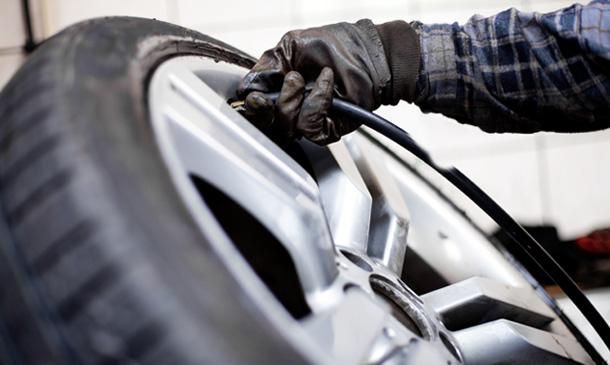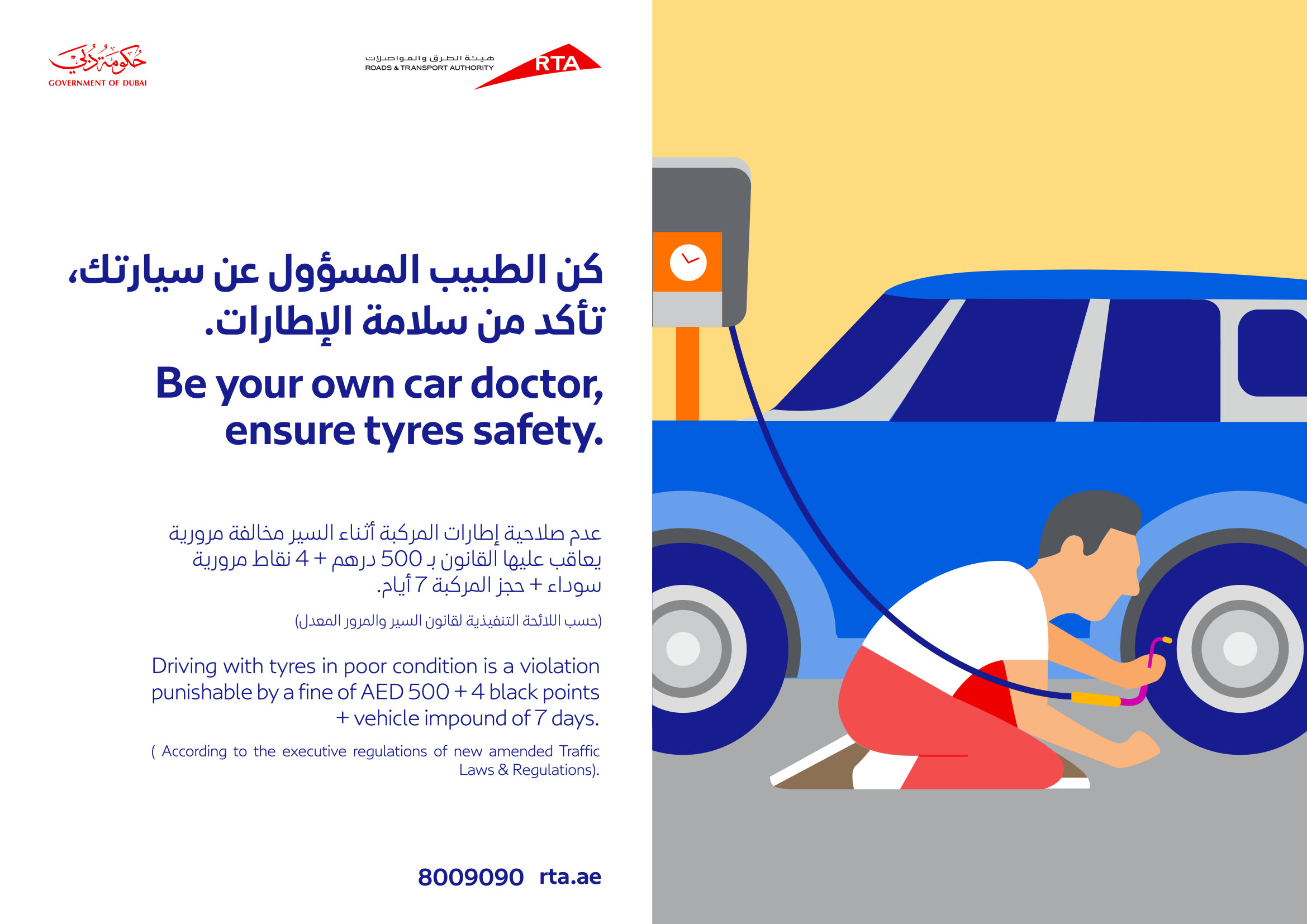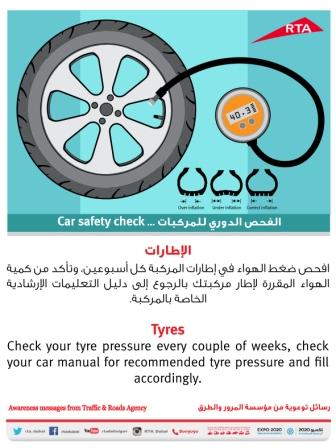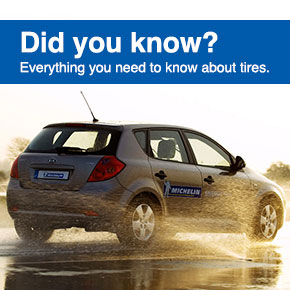
Tire related accidents cause around 5% of the UAE traffic death toll and this is too much!
All vehicle tires must be procured, fitted and maintained properly, considering the taxing climate of the UAE.
High temperatures can become a serious problem for tires, especially if they are not properly maintained. Incorrect inflation pressures, poor wheel balance and alignment also contribute to a reduction in tire life and safety.
Make sure you follow this simple checklist to stay safe:
- Use only reputable branded and certified tires. Avoid fitting tires which may be substandard and therefore potentially unsafe.
- Use the correct tire type and dimension for your vehicle. Refer to the vehicle owner’s manual or ask for expert advice if not sure.
- Check the tire pressures at least once per month using a reliable or calibrated gauge. The recommended pressures are quoted in the vehicle owner’s manual or on a sticker usually attached to a door frame or fuel cover. Make sure that the pressures are checked when the tires are “cold”, i.e. driven less than 3 km before the check.
- Avoid driving at lower pressures than those recommended by the vehicle manufacturer, because,
- The tire / road contact area is altered which could lead to uneven and/or premature wear, and is likely to adversely affect vehicle handling
- The sidewall deflection increases which will cause the tire to overheat with a possible degradation of the internal structure, leading to rapid loss of air or “burst”
- Inflating tires with Nitrogen instead of air can help to maintain pressure stability for longer periods
- The RTA recommends replacing tires no later than 5 years, or earlier if the remaining tread depth is below 1.6 mm at any part of the tire tread band. Tires must also be replaced if there are other signs of wear or damage, for example, cracks or cuts in the sidewall, parts of the tread band are damaged, etc.
- It is highly recommended that all four tires be replaced at the same time, especially on permanent four-wheel drive vehicles to avoid mechanical damage. If only two tires are replaced on a two-wheel drive vehicle, it is recommended that the new tires be fitted to the rear axle for vehicle stability and safer handling.
- Front and rear tires may be permutated (commonly called rotated) every 10 000 km or as advised by the vehicle manufacturer, to even out the wear. A wheel balance and alignment check at this time will help the potential life of the tire to be fully realised, as well as ensure safer driving.
- Respect the load and speed capabilities of the tires fitted to the vehicle by not exceeding them.
- Avoid driving over or near hazardous objects that could damage the tires and make them unsafe or unfit for service, for example, rocks, glass, potholes, kerbs etc
- Spare tire: regularly check the age, condition and air pressure to avoid having a spare tire unfit for use when needed!
Here is the link to a very good article: http://gulfnews.com/guides/life/transport/how-safe-are-your-car-tyres-1.1375844















Pingback: Pre Drive Vehicle Check | Road Safety UAE
“Tires are the most underlooked part of our vehicle. Recently I came across a study that mentioned that around 33 % of road accidents occur due to unsafe tires.
Thanks for sharing this useful guide with us. I hope we can benefit most from it.”